This phenomenon is very common and negatively affects the quality of life, so you should talk more about the types of diseases, symptoms, causes and methods of treatment.
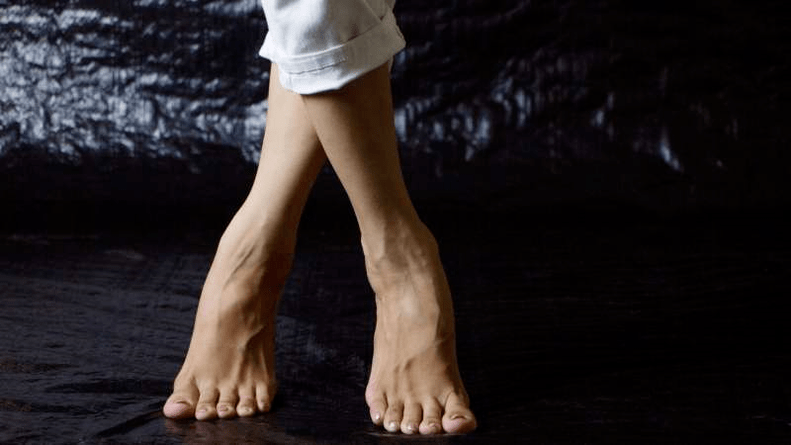
What is Valgus' deformation?
Deformation of valgus stops is an orthopedic pathology, where the first joint of the plusplance joint occurs. Thus, the first (large) finger on the feet gradually deviates out, the other fingers are defective. The most characteristic feature of the disease is the development of exophytes (bone growth), the foot increases in horizontal size, bending it. Diagnosis is made when several indicators change at once: the most characteristic feature of the disease is the development of exophytes.
Reason, the mechanism
With foot deformation, joint biomechanics are disturbed and plusneva bones occur, leading to curvature. The disadvantage of the foot tissue is guilty of valgus deformation. With foot deformation, joint biomechanics are disturbed and plusneva bones occur, leading to curvature. The thumb can no longer look inside and deviate.
Further, the patient awaits the inflammatory process where the bone is observed, bursitis and changes in bone tissue in the bone area are added 1 (head). All of this leads to joints, arthritis and arthrosis. All of this is complicated by the development of corn and calluses.
Reason:
- improper shoes (high heels, and absence, short or small shoes, narrow feet);
- flat feet;
- Hypermobility of the joint of the foot;
- short calf muscles;
- genetics and offspring;
- osteoporosis;
- working conditions (those who have to stand for a long time);
- disruption in the work of the endocrine system;
- Overweight.
Type
There are many different types of valgus deformation:
- Static deformation is combined with flat feet and occurs due to spinal curvature. Treatment should start with back treatment.
- The reason for deforming the foot structure of the foot is a natural abnormalities of the foot development.
- The cause of the paralysis species is encephalitis or polio.
- Rachitic develops due to vitamin D deficiency and other substances. It may also be due to a violation of mineral metabolism.
- Traumatic occurs after ligaments or broken.
- Spastic deformation develops due to muscle cramps.
- With compensation, tendons are shortened and the form of change with the ankle.
- Hyper -correctional develops after improper therapy from clubfoot.
- With equino-plan deformation, the walking is disturbed, the only one is very curved into, and after a long standing, the person feels severe pain. The disease develops due to cerebral palsy and is often found in infants.
- When installing a flat-valgus foot, it has no horizontal and hollow arrangement.
- The fifth-form deformation type develops due to the inappropriate location of the foot in the mother in the uterus. The front of the foot is largely allocated, and the heel visually combines with the lower leg.
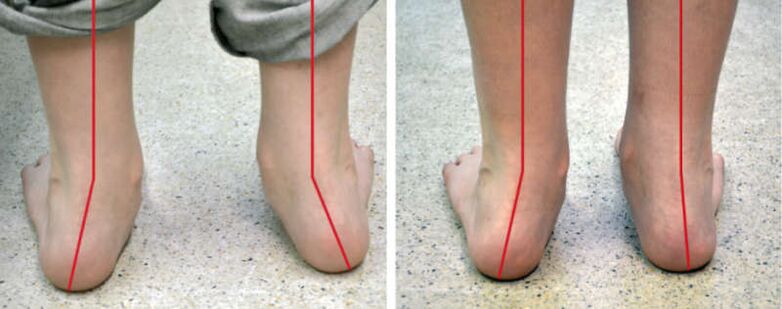
Symptoms at different levels
Therefore, the disease develops slowly, but remains, at a different level of deformation of the foot valgus, the symptoms will vary.
In the early stages, there are:
- painful sensations when wearing some types of shoes (with long legs or narrow shoes);
- Redness of the skin in the prominent seed area.
At the 2nd level, there are:
- the process of inflammation in the joints;
- ill;
- swelling;
- Growth is more prominent.
At the 3rd stage:
- The pain becomes exhausting and sharp;
- In the feet are corn or keratinized skin;
- There is a deformation of all the fingers and joints.
Diagnostics
The main diagnostic method for determining the deformation of the foot valgus is:
- Clinical examination. Orthopedist will appreciate the level of fingerprints -and heels, as far as the gate is placed and how much it turns inside, plus the presence of edema.
- X -ray. It is done standing and immediately in 2 projections. Allows you to accurately evaluate all angles between the joints.
- Ultrasound.
- Plantography. It will help determine how much loads in the feet and flat stage.
- Computer analysis. Otherwise, a foot computer study is called postometry and allows you to determine the pressure on the feet.
Treatment in children and adults
If the deformation is not overly neglected, conservative treatment is used.
Physical Education Medicine
It's best to do it in the hospital, but you can at home. It strengthens the feet and helps distribute the load properly in the legs, plus improves blood circulation and does not allow edema to develop. The complex recommends orthopedis, or you can deal with video.
Here are the most effective exercises:
Bicycle training is effective for newspapers and hips, but it will help the feet
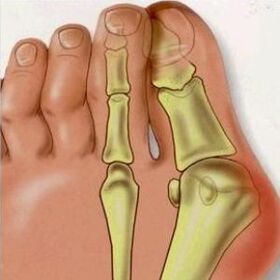
- Bicycles. It is effective for newspapers and hips, but it will help the feet. When you move your feet from you, pull your feet forward when you pull your feet on yourself.
- Sitting on the floor. We do based on the floor with our hands. We bend 8 times and extend the foot on the ankle, spread the finger widely and return it to i. p. Effectively compress and drop the fingers 6 times.
- In the chair. We move foot only with the fingers forward and backwards. You can surround the finger pencils -1 and to -2 and pull them on what you like.
- We stretched the leg straight on the chair on the chair and pulled the ankle on ourselves until it stopped. We bend it and the first finger. After the feet, we stretch ourselves and bend the fingers as much as possible. For children, climbing to socks, walking inside the feet will work.
It will be useful to walk anywhere -the surface of the ribs, sand, gravel (not fast) and just along the narrow road. Scooters and bikes will be useful to children, as they strengthen the muscles and joints. Swimming can also strengthen the leg muscles and improve blood circulation in it.
An orthopedic device
Various devices are used here, but they are selected only with orthopedists:
- Orthopedic shoes. Such shoes should have a hard and high beach, and a special heel, longer than the inside. He should also have a great exposure that allows you to wear it with other devices (Correators and latch).
- Layer. They can be called by the sale by the reader. Overlay prevents deformation from developing, reduces rubbing and pressure, and does not allow fake articular position to be formed. Made from silicone.
- Tires. Sometimes they avoid surgery, but with advanced stages they are not recommended. They strictly fix the joints and allow them to remain in a quiet state, relax the muscles and prevent swelling. All of this allows the joints to take a healthy and proper form.
- Wrapping. They are used for Hallus Valgus, similar to tires, but they are softer.
- Supinator. So if not, they call orthopedic insoles. This is a mechanical support that corrects the load distribution on the feet and sets the joints. With valgus deformation, horizontal, horizontal and frame supervisors can be used.
- Interdaling partition. They can be called gaskets, rollers or separators. Simplifying the situation and warning the deformation, but they cannot dramatically cure. Normalizing the style of walking. They can be with a key, made of gel or silicone.
- Orthes and tutors. Such products are needed with lower leg or knee valgus deformation. Their job is to fix rigid feet. Heralds sold can also be called Insoles, written above.
- Massage carpet. They perform the same function as any uneven surface where it is recommended to walk during the disease. Increases blood flow, prevents swelling, relieves pain.
Physiotherapy
The task is to relieve the symptoms of pain, prevent the stagnant process in the foot, improve blood circulation and relieve inflammation with swelling:
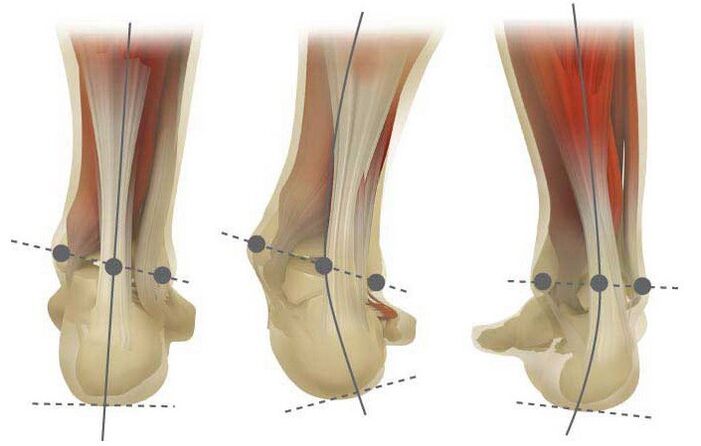
- Electrophoresis is carried out with calcium preparations, chondroitin with glucosamine, anti -inflammatory and analgesic drugs
- Saninamotherapy. This treatment is with electric current (frequency of 50-100 Hz. ). Relieving pain has the effect of myostimulating, improving mutual nutrition. In the treatment of joints, bifurcated electrodes are used. It is contraindicated at high temperatures, hypertension, asthma, epilepsy, radiculitis and neuritis, injury.
- Electric stimulation. The effects of pulsating current with different clues allow you to train and strengthen the deepest muscles. Because of this, the feet are strengthened. It is done by using electrodes on the skin. Duration - no more than 2/3 hours, this course is up to 30 procedures. Contraindications are similar to diadime therapy plus skin damage.
- Electrophoresis. In this disease, electrophoresis is performed with calcium preparations, chondroitin with glucosamine, anti -inflammatory and analgesic drugs. No contraindications, but you need to choose the right remedy.
- Magnetotherapy. It stimulates all cells and accelerates the metabolic processes in the joints, used as an additional agent. The electromagnetic field stimulates the nerves and muscles.
- Mud application. Relieves inflammation, swelling and pain. The mud can be sapropelia, hydrothermal and peat, volcano and sopom. Used for feet in the form of "socks" and covered with cloth. Contraindicated in skin injury and diabetes.
- Ozokerite. She warms and nourishes the joints, stopping inflammation. Used in the form of a bath or "boot".
- Paraffin application. Paraffine is placed on sore feet. Below they can apply anti -inflammatory ointment. Relieves inflammation and pain, increases blood supply. Contraindications are the same as in the treatment of mud and ozkerite.
- Night shower. Relax the leg muscles, relieve pain and inflammation. The most suitable for salt and bathing.
- Acupuncture. It will help eliminate some of the causes of foot deformation if it is caused by any nervous system or endocrine disease: you only need to act properly at the right point.
Correction of operations
With too much foot deformation and too much exophite, operation is one of the most effective methods. About a hundred types of operations are used to treat today's deformation.
The most effective is:
Recovery begins on the 2nd day, when operated is allowed to move fingers
- Growth surgery (minus is that it can grow again);
- balancing periarticular muscles;
- defective bone reconstruction operations;
- joint fixation - Attodesis;
- operation to restore the ligaments and the correct location;
- joint or tendon implantation;
- Operation on bone -adding head isolation - exostctomy;
- The operation to change the angle between the bone and the removal of the phalanx or plus is osteotomy. Can be chevarine, proximal or distal;
- Dozens of other operations.
Recovery begins on the 2nd day, when the operated is allowed to move the finger. After 1. 5 weeks, you can start walking, but you can't step into the area that is operated together.
It is possible to load the foot in 4-5 weeks. After 6 months, you can wear heels and start playing sports.
During recovery, it is recommended to undergo shock wave therapy, which improves blood circulation in tissues and reduces edema. The physiotherapy method described above will be useful.
A method of people's treatment
It is not the best method of correction of the deformation of the leg valgus and removing the bone. But you can try.
Popular compression.
They use iodine, cabbage sheets, fish (rivers), aspirin, turpentine, snow, castor oil:
- Cabbage sheets can be used for affected joints, wrapped in scarves and sleeping.
- The first turpentine rubs into the skin, after warming the feet and going to the bed.
- Bath with iodine. One teaspoon of iodine is required a liter of water. Slow down the foot 1/3 hour and roll well.
But the practice shows that the treatment of folk curvature of foot valgus is ineffective and can be harmful.
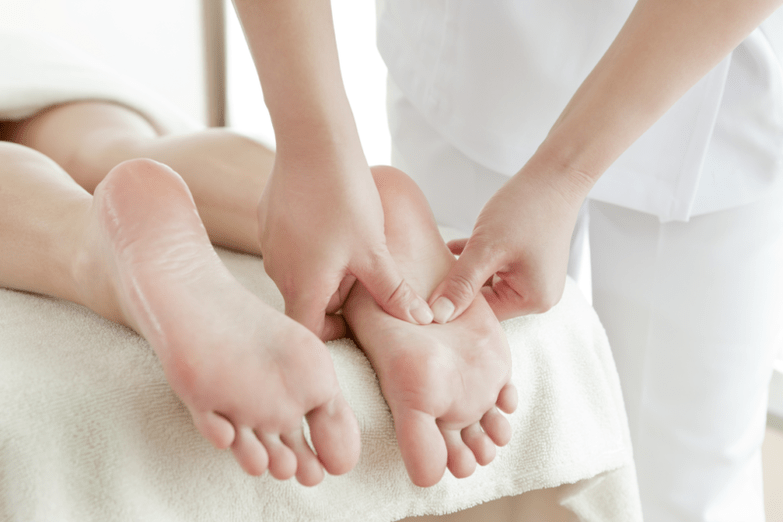
Prevention
Violence in the disease occurs, because the weakness of the ligaments and muscles is not easy.
Prevention includes:
- Wearing the right shoes: natural, without narrow socks and small heels;
- Flat feet treatment in time;
- rest to the feet;
- load rules;
- relaxing bath;
- Insoles or orthopedic supervisors.
What should shoes supposed to be?
It is best to order orthopedic shoes in a special store and after consulting with orthopedis.
Shoes should be:
- soft;
- The socks should be wide;
- Kubs are required - up to 4 cm;
- Background and supervisor should be dense and high (background height - 3 cm from heels).























